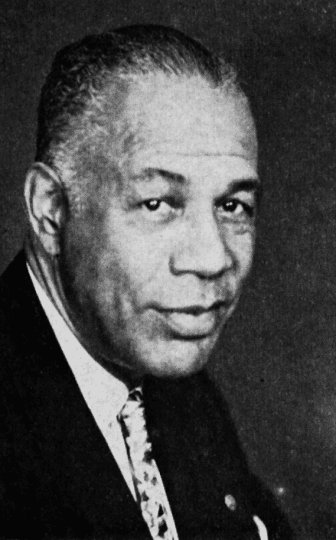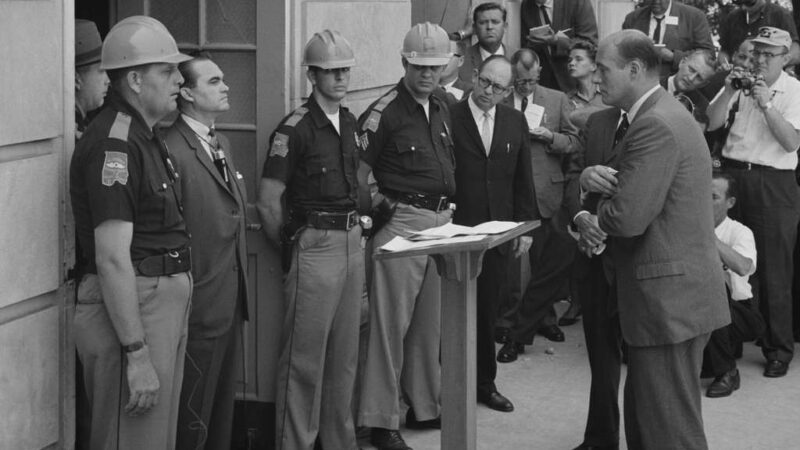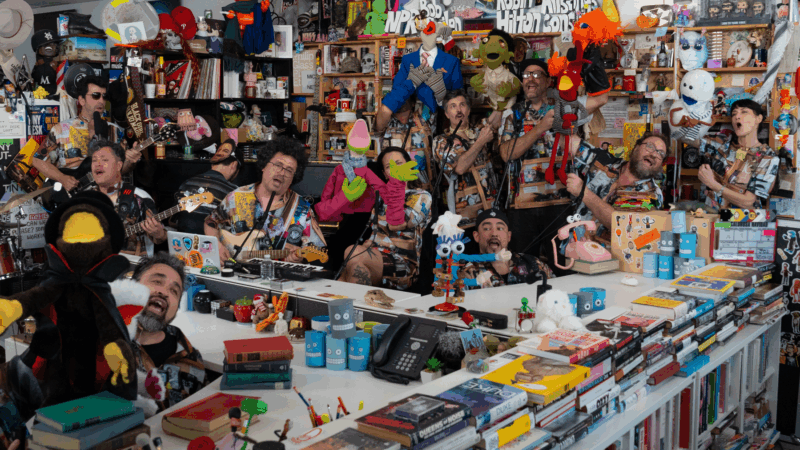The Green Book and the Black-Jewish Relationship During Segregation
The Green Book has been described as “the Bible for black travelers in the mid-20th century.” It featured black-friendly businesses like motels and restaurants where travelers could rest on long road trips. The book’s publisher actually took the idea from a similar book used by Jews. A play titled The Green Book, which opens tonight in Birmingham, highlights the relationship between the black and Jewish communities during segregation.
In Calvin Ramsey’s play, we meet Jacob, a Holocaust survivor, and Keith, a black traveling salesman who sells the Green Book. Both are guests at the home of a black family in Missouri. The play is set during the days of Jim Crow when travel wasn’t safe for people of color or religious minorities.
Jacob tells Keith how he befriended a black soldier in WWII who helped him escape death in a concentration camp. This friendship led Jacob to the Green Book, which he uses on his trip. Playwright Calvin Ramsey is often asked why the protagonist in his play is Jewish and not black like him. He says he wanted to highlight the history these two communities share.
“You know, in the 50s in the late 40s, the Jewish community and the black community really worked closely together to overturn a lot of the unfairness before the civil rights acts were passed,” Ramsey says.
“It’s a shared experience of slavery, a shared experience of prejudice,” says Alvin Sugarman, Rabbi Emeritus at The Temple in Atlanta.
Blacks and Jews were targets for violence in the South in the early to mid-20th century. In Birmingham, years before the bombing of the 16th Street Baptist Church, a bomb was discovered at Temple Beth-El. That bomb was disarmed. According to police accounts, the bomb at Temple Beth-El would’ve been more destructive than the 16th Street bomb and would’ve completely destroyed the building.
But Sugarman says struggle wasn’t the only thing uniting these groups. There was also a mutual faith in God and a demand for equality.
“And of course the great Hebrew prophets who cried out for, ‘Justice! Justice! Thou shalt pursue justice!’ That whole prophetic cry for social justice,” he says.
According to the Jewish Virtual Library, the relationship between Jews and blacks strengthened during World War II. Jews fleeing persecution in Europe and ones fighting anti-Semitism in America joined forces with the African-American community in the fight against racism and bigotry. The groups often lived alongside each other in cities. Jews owned several businesses in black neighborhoods, something Ramsey remembers very well.
“[The] first nine years of my life I was in Baltimore,” he remembers. “And I lived in a neighborhood where pretty much all the merchants on each corner were Jewish. And my mom would send me to the store. They were always nice. They always made me feel good, always put something extra in the bag for my mom or something like that.”
Ramsey says his play is an homage to the Jewish merchants that had such a positive effect on his childhood. But more than anything, Ramsey says, his play honors Victor Green’s memory and the motorist hand guide that made him famous.
“This is somebody, honestly, that every person – especially every black person – should be learning about in school because he was such a big part of people who grew up in the early 20th century’s life. Like, you had a Green Book in your car,” says Ahmad Ward, vice president of education and exhibitions at the Birmingham Civil Rights Institute.
The Green Book is indicative of what African-Americans had to do to lead normal lives during segregation, Ward says. But what most don’t know is that the idea for the Green Book was actually borrowed from a similar book used by Jews in the early 20th century, outlining another important intersection between these two communities.
The New York Public Library has digitized several copies of the Negro Motorist Green Book. Click here for more.
How George Wallace and Bull Connor set the stage for Alabama’s sky-high electric rates
After his notorious stand in the schoolhouse door, Wallace needed a new target. He found it in Alabama Power.
FIFA president defends World Cup ticket prices, saying demand is hitting records
The FIFA President addressed outrage over ticket prices for the World Cup by pointing to record demand and reiterating that most of the proceeds will help support soccer around the world.
From chess to a medical mystery: Great global reads from 2025 you may have missed
We published hundreds of stories on global health and development each year. Some are ... alas ... a bit underappreciated by readers. We've asked our staff for their favorite overlooked posts of 2025.
The U.S. offers Ukraine a 15-year security guarantee for now, Zelenskyy says
Ukrainian President Volodymyr Zelenskyy said Monday the United States is offering his country security guarantees for a period of 15 years as part of a proposed peace plan.
Genre fiction and female authors top U.S. libraries’ most-borrowed lists in 2025
All of the top 10 books borrowed through the public library app Libby were written by women. And Kristin Hannah's The Women was the top checkout in many library systems around the country.
The Best Tiny Desk Concerts of 2025
Which Tiny Desk made an audio engineer question everything? Which one made a producer want to cry? Touch grass? Look back on the year in Tiny Desk, with the people who make them.









